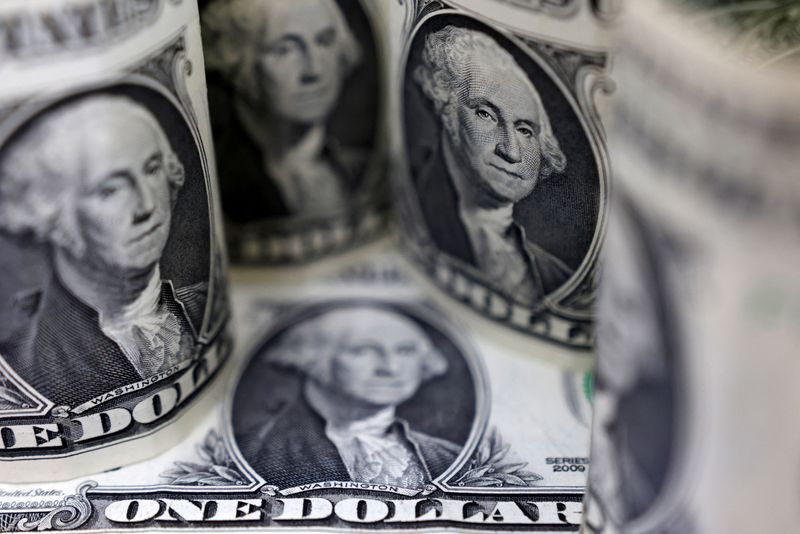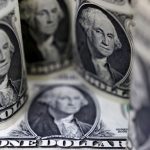TOKYO/LONDON (Reuters) -The dollar traded near three-week lows on Wednesday as a cautious tone from Federal Reserve Chair Jerome Powell kept risk sentiment in check, while the New Zealand dollar fell after the country’s central bank signaled it saw potential for rate cuts.
In the first day of his testimony to Congress overnight, Powell said a rate cut is not appropriate until the Fed gains “greater confidence” that inflation is headed toward the 2% target, setting the stage for Thursday’s consumer price index (CPI) report for June.
Powell did acknowledge that the labour market, which had been a major source of concern for Fed policymakers, is cooling.
“We now face two-sided risks”, and can no longer focus solely on inflation, he said.
The dollar index, which measures the U.S. currency against six others including the euro and yen, was little changed at 105.09, after rising about 0.1% on Tuesday.
It had dipped on Monday to the lowest since June 13 following unexpectedly soft U.S. payrolls data.
Traders now have around 73% odds for a rate cut by September, slipping from 76% a day earlier, the CME FedWatch tool showed, with a second reduction mostly priced in by December.
With CPI, which could influence investor thinking on the timing of the first U.S. rate cut, imminent, the currency market would likely trade in a holding pattern for the coming day, analysts said.
“Powell did not really tell us anything new to be honest, he was quite cautious and, again, was repeating what he was already telling us after the last meeting,” Commerzbank (ETR:CBKG) FX strategist Michael Pfister said.
“The market is probably waiting for CPI, which – I think – is the only thing this week of importance.”
Following his testimony to the Senate, Powell is scheduled to speak before the House later in the day.
The euro held at $1.0815, below Monday’s one-month high, as investors brace for a political deadlock in France in the wake of the shock election win for the country’s leftist alliance.
The single European currency came under pressure last month after the snap election was called, but has since clawed back some of those losses, although the risk of impasse in parliament is keeping investors wary.
Meanwhile, the kiwi was the biggest laggard among the major currencies, down 0.9% at $0.6071, pulling further away from Monday’s three-week high of $0.6171 after the Reserve Bank of New Zealand opened the door to possible rate cuts should inflation slow as expected.
The RBNZ, which held rates steady as widely expected, expressed confidence that inflation would return to its target band this year, spurring bets for early policy easing.
At the previous meeting in May, policymakers had flagged the potential for an additional rate hike.
“There was a signal of greater confidence that inflation will return to target this year,” said Kyle Rodda, senior financial market analyst at Capital.com.
“That’s a revelation and sets the stage for a rate cut before the end of 2024. The markets were already implying it, but this dovish shift suggests it could come sooner than previously though.”
The Australian dollar surged 0.5% against its neighbour to hit NZ$1.1065 for the first time since February 2023. The Aussie was last flat against the U.S. dollar at $0.6738, but was still hovering close to Monday’s six-month peak of $0.67615.

The dollar rose 0.1% to 161.515 yen as the currency pair traded in a tight range ahead of the Bank of Japan’s meeting due at the end of the month.
Sources told Reuters the BOJ will likely trim this year’s economic growth forecast in July but project inflation will stay around its 2% target in the coming years, keeping alive the chance of an interest rate hike this month.
To read the full article, Click Here

